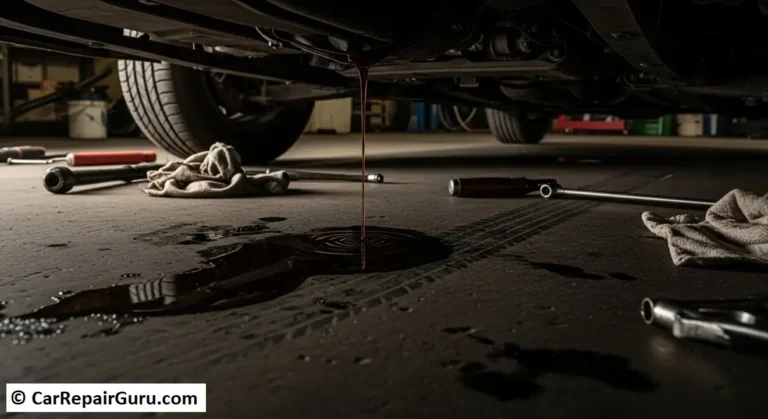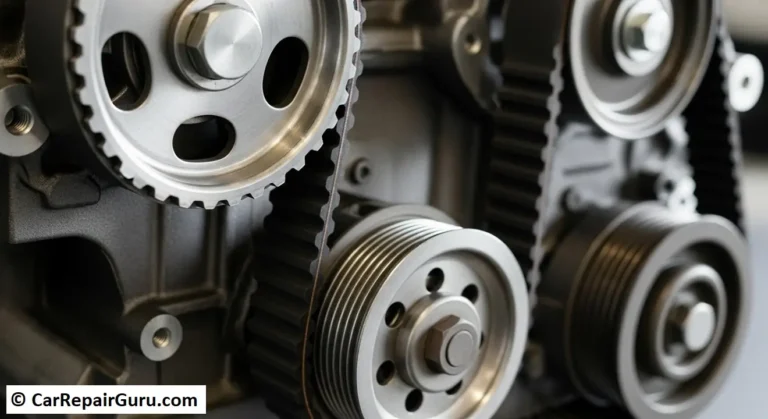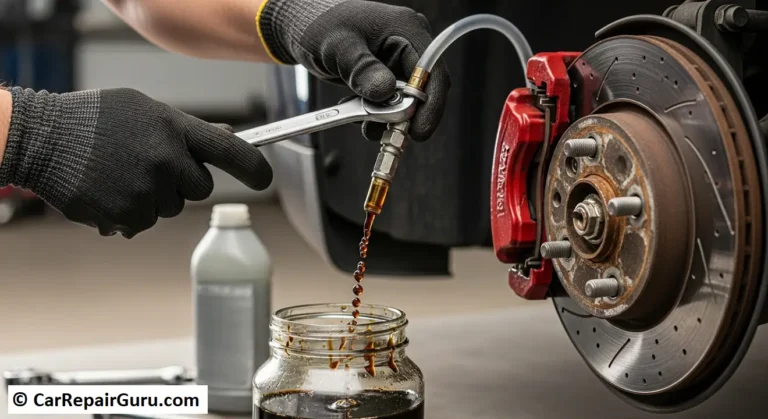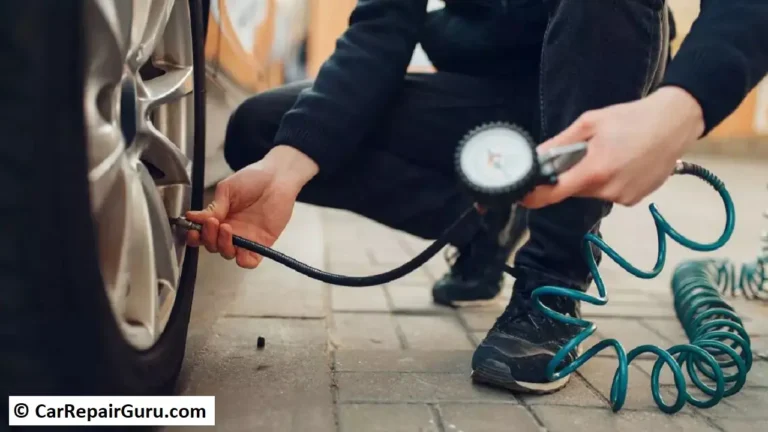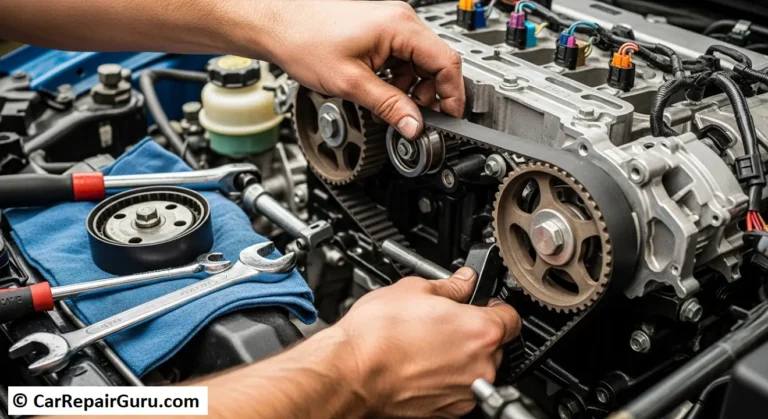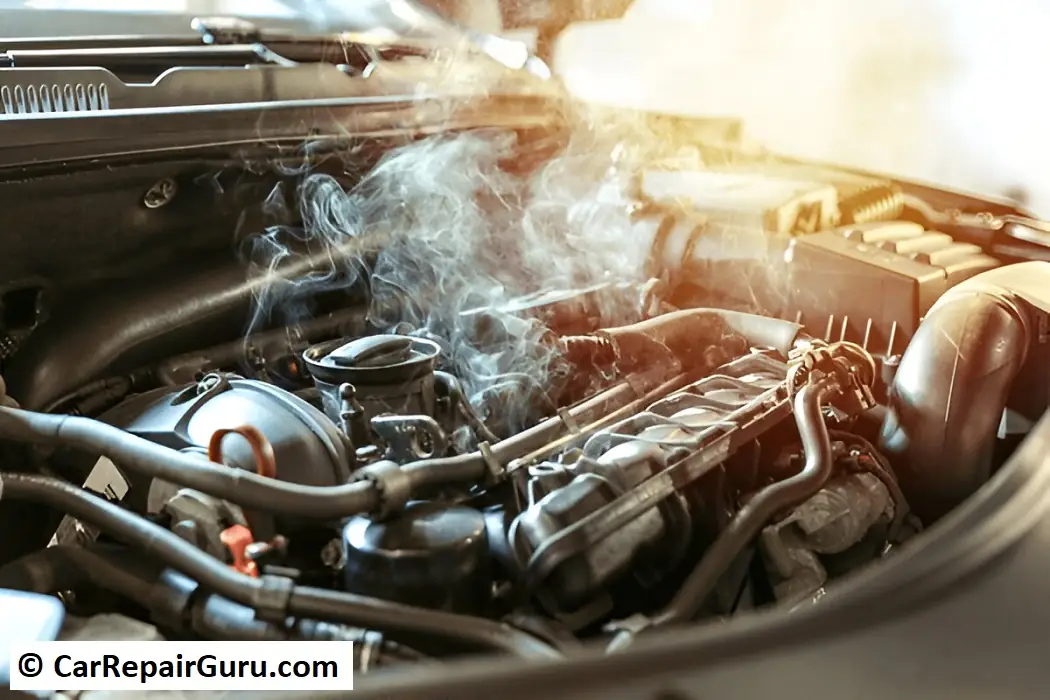
Imagine you’re driving on a sunny day, everything seems fine—until you notice steam coming from under the hood and your temperature gauge is in the red zone. That’s a clear sign of engine overheating, and it’s not something to ignore.
Engine overheating is more than just an inconvenience—it’s a warning that something’s gone wrong in your vehicle’s cooling system. If not addressed quickly, it can lead to serious engine damage, expensive repairs, or even a complete engine failure. Common culprits include coolant leaks, radiator issues, or a faulty thermostat—and the symptoms often show up when you least expect them.
But the good news? Most overheating issues are preventable with a bit of knowledge and regular car maintenance.
In this guide, we’ll walk you through what causes engine overheating, how to spot the warning signs, and the best steps to prevent it. Whether you’re a seasoned driver or new behind the wheel, understanding how to protect your engine from overheating is a skill every car owner needs.
Let’s dive into the details.
Understanding Engine Overheating
So, what exactly happens when your engine overheats?
Your car’s engine operates at a high temperature but stays cool thanks to the cooling system—a network of components like the radiator, water pump, thermostat, and coolant fluid. These parts work together to keep your engine running at an optimal temperature, ensuring it doesn’t fry itself from the inside out.
But when one part of that system fails—say, there’s a coolant leak or a broken radiator fan—the engine can no longer regulate its temperature. This leads to engine overheating.
In simple terms: imagine running a marathon in the desert without water—your body would eventually overheat, right? It’s the same for your car. Without proper coolant circulation, the heat builds up quickly.
Here are some key things that disrupt this balance:
- Low coolant levels (due to leaks or evaporation)
- A faulty thermostat that’s stuck closed
- Radiator clogs or debris blocking airflow
- Water pump failure preventing proper coolant circulation
When this happens, your temperature gauge climbs, and the risk of engine damage skyrockets. Overheating can warp your engine block, blow a head gasket, or even crack the radiator.
Understanding how engine overheating occurs is the first step toward preventing it.
Common Causes of Engine Overheating
When your engine starts to overheat, your car is trying to tell you something—and it’s not good. To keep your vehicle running smoothly and avoid expensive damage, it’s important to understand what’s behind engine overheating in the first place.
Here are the most common causes:
1. Coolant Leaks
This is one of the biggest culprits behind an overheating engine. Your coolant fluid is essential for absorbing heat from the engine and transferring it to the radiator to be cooled. If there’s a coolant leak, the system can’t do its job, and temperatures will quickly rise. Leaks can come from a cracked radiator, damaged hoses, or even a worn-out radiator cap.
2. Faulty Thermostat
The thermostat controls the flow of coolant to the engine. If it’s stuck closed, coolant can’t circulate properly. This traps heat in the engine and can cause rapid engine overheating. A faulty thermostat is often overlooked but is a frequent reason why engines overheat, especially on older vehicles.
3. Radiator Issues
Your radiator is responsible for cooling down the hot coolant. But if it’s clogged with dirt or debris, or if there’s internal corrosion, heat won’t dissipate properly. A blocked radiator can also limit airflow, especially if the vehicle is moving slowly or sitting in traffic—this can quickly lead to overheating.
4. Water Pump Failure
The water pump circulates coolant through the engine and the radiator. If it fails (due to leaks, impeller damage, or worn bearings), the flow stops, and your engine temperature starts to spike. Think of the water pump as the heart of your cooling system—when it stops pumping, things go south fast.
5. Broken Radiator Fan
When you’re driving at low speeds or idling, airflow alone isn’t enough to keep your engine cool. That’s where the radiator fan comes in. If the fan isn’t working—due to electrical problems, a bad sensor, or a failed motor—heat builds up, and you’ll start seeing signs of engine overheating.
6. Low Engine Oil
Oil isn’t just for lubrication—it also helps with temperature control. Low oil levels increase friction and heat, putting extra stress on your engine and making overheating more likely.
7. Blocked or Collapsed Hoses
Hoses carry coolant to and from your engine. If they’re blocked, kinked, or collapsed, coolant can’t circulate properly, which again results in overheating. This is especially common in older vehicles or those with poor car maintenance history.
Spotting the source of engine overheating is the first step toward fixing it.
Warning Signs of an Overheating Engine
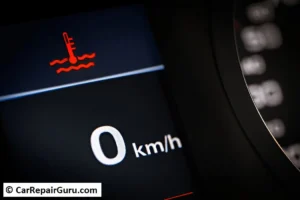
Your car doesn’t just suddenly break down due to engine overheating—it usually sends out some pretty loud warnings first. If you know what to look for, you can act fast and save your engine from serious damage.
Here are the most common signs your engine is overheating:
1. Rising Temperature Gauge
The easiest and most obvious clue is your temperature gauge creeping into the red zone. Normally, the needle stays in the middle. But if it starts climbing higher than usual, that’s a clear signal your engine is getting too hot. Don’t ignore it—it’s your first line of defense.
2. Steam from the Hood
Seeing steam coming from under the hood? That’s not just moisture—it’s your engine’s cry for help. This usually means the coolant is boiling and escaping through the radiator cap or a leak. Pull over immediately and turn off the engine to avoid further damage.
3. Coolant Warning Light
Modern cars are equipped with a coolant temperature warning light. If this light turns on, it means your engine’s temperature has crossed a safe threshold. This could be due to low coolant levels, a thermostat issue, or a blocked cooling system.
4. Strange Smells
Overheating engines can produce strange odors—sweet (coolant leaks), burnt (oil overheating), or even rubbery (hoses or belts overheating). These smells often mean something is off under the hood.
5. Ticking Sounds or Engine Knock
As the engine oil thins out from excessive heat, parts may begin to rub against each other. This causes ticking or knocking noises, and it’s a serious warning that engine damage is imminent if you keep driving.
Ignoring these signs can turn a minor repair into a major expense. The moment you spot any of these symptoms, it’s time to act.
Immediate Actions When Your Engine Overheats
So your engine overheating warning just kicked in—what now?
Staying calm and knowing exactly what to do can save your car from serious damage. Here are the steps to take the moment you notice your engine’s temperature rising dangerously:
Turn Off the A/C and Crank the Heater
It might sound backward, but turning on the heater helps draw excess heat away from the engine and into the cabin. While it’s uncomfortable, this can help stabilize the engine temperature just long enough to find a safe place to stop.
Pull Over and Turn Off the Engine
As soon as it’s safe, pull over and turn off the engine. Continuing to drive with an overheating engine increases the risk of engine damage like a blown head gasket or warped cylinders.
Wait Before Opening the Hood
Don’t pop the hood immediately. Let the engine cool for at least 15–30 minutes to avoid burns from steam or hot coolant. A good rule of thumb: if you still hear sizzling, it’s not ready.
Check Coolant Level
Once the engine has cooled, check the coolant reservoir. If the coolant level is low, top it off—only with the correct type of coolant. Never add cold water to a hot engine, as it can cause cracks.
Call for Help if Needed
If you’re unsure what caused the overheating or you suspect a cooling system failure, it’s best to call roadside assistance or head to a trusted mechanic.
Taking these quick, smart steps can help you avoid a much bigger problem down the road.
Preventive Maintenance Tips
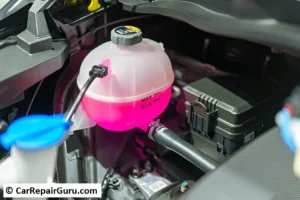
Preventing engine overheating is all about staying ahead of the problem. Regular maintenance doesn’t just keep your car running smoothly—it helps you avoid costly repairs, dangerous breakdowns, and unnecessary stress.
Here are smart, simple ways to keep your cooling system in top shape:
1. Check Coolant Level Regularly
Make it a habit to check your coolant level every few weeks, especially before long trips. Low coolant is one of the leading causes of engine overheating. If levels drop frequently, it might be a sign of a coolant leak that needs immediate attention.
2. Flush the Radiator
Over time, rust, debris, and sediment can build up in your radiator, reducing its efficiency. A radiator flush every 1–2 years (or as recommended by your manufacturer) clears out gunk and helps the cooling system work properly.
3. Inspect Hoses and Belts
Check for cracks, bulges, or leaks in your radiator hoses and drive belts. These parts play a vital role in circulating coolant and powering the water pump. If they’re worn out, they could be the weak link that leads to overheating.
4. Test the Thermostat
A faulty thermostat is a small part that can cause big problems. If it gets stuck closed, it blocks coolant flow—leading directly to engine overheating. During routine checkups, have your mechanic test it to ensure it’s opening and closing correctly.
5. Keep an Eye on the Temperature Gauge
Don’t ignore your dashboard. The temperature gauge gives you a real-time look at how hot your engine is running. If it starts creeping up regularly, that’s your cue to have your system inspected.
6. Service Your Cooling System
Have a trusted mechanic check the entire cooling system at least once a year. This includes the radiator, water pump, radiator fan, and hoses. Preventative maintenance now can prevent a major repair—or total engine failure—later.
Taking care of your cooling system is one of the smartest things you can do as a car owner. It’s not just about avoiding engine overheating—it’s about extending the life of your vehicle and driving with peace of mind.
Conclusion
Engine overheating isn’t just an inconvenience—it’s a warning sign that something serious is going on under the hood. Whether it’s a coolant leak, a faulty thermostat, or a neglected cooling system, ignoring the signs can lead to costly engine damage and breakdowns.
The good news? With regular car maintenance, early detection, and a solid understanding of the causes and symptoms, you can prevent most overheating issues before they start.
So keep an eye on your temperature gauge, check your coolant level often, and never skip a radiator flush or cooling system check. Staying proactive means staying safe—and keeping your car running smoothly for years to come.
FAQ
What causes engine overheating?
Engine overheating can occur due to several reasons, including coolant leaks, a faulty thermostat, radiator problems, a malfunctioning water pump, or low oil levels.
How do I know if my engine is overheating?
Signs of an overheating engine include a high temperature gauge, steam coming from the hood, strange smells (like burning coolant), and a loss of engine performance.
Can low coolant cause engine overheating?
Yes, low coolant levels can cause engine overheating by reducing the cooling system’s ability to regulate the engine’s temperature.
What should I do if my car engine overheats?
If your engine overheats, turn off the air conditioning, pull over safely, and let the engine cool. Check coolant levels and call for professional assistance if necessary.
How can I prevent engine overheating?
Regularly check your coolant, inspect the radiator, maintain proper oil levels, and ensure that the water pump and thermostat are in good condition.
